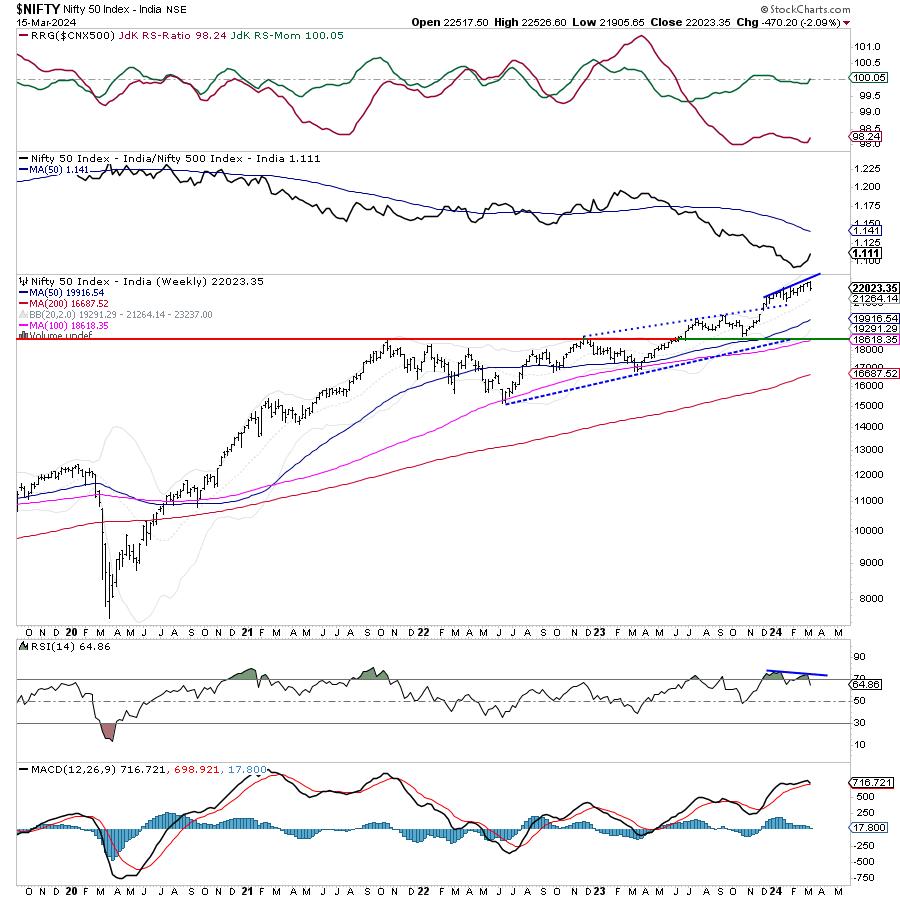Alkyl Amine vs. Balaji Amine

Alkyl Amine vs. Balaji Amine: The chemical industry is important for the economic development of our country, providing products and providing technological solutions to almost all sectors of the economy. In this article, we will compare two aliphatic amine companies and understand and analyze their business.
About Amines and Their Uses
Aliphatic amines are formed when an aliphatic molecule replaces one or more hydrogen atoms of ammonia. This is usually achieved by the reaction of alcohol and ammonia, but can also be synthesized using other organic molecules such as aldehydes.


It is usually distinguished by an unpleasant, fishy odor. Amines play an important role as nitrogenous compounds in biological systems and form components in the pharmaceutical, pesticide, veterinary and nutritional industries.
Amines are used as solvents, catalysts, intermediates, and building blocks in a variety of industries. In the medical field, amines are needed for the production of active pharmaceutical ingredients (APIs). Likewise, amines are important in pesticide production. Many personal care products and detergents are based on amine moieties.
It plays a wide range of roles in industrial applications such as gas processing, resins, coatings, water treatment and more, from pH regulation to carbon dioxide absorption and polymerization reaction control. The properties and applications of amines enable a variety of industrial uses and new product development.
Alkyl Amine vs. Balaji Amine
Company Overview
Alkyl Amine Chemical Company
Established in 1979, Alkyl Amines Chemicals Ltd. (AACL), headquartered in Mumbai, India, is an international supplier of aliphatic amines, specialty amines and amine derivatives to customers in pharmaceuticals, agrochemicals, water treatment, rubber chemicals and various other sectors. industry.
They have a portfolio of more than 100 products serving more than 20 countries around the world through 20 individual production plants across three manufacturing sites spanning over 110 acres of land.
Balaji Amines Limited (BAL)
Balaji Amines Limited (BAL), based in Solapur, Maharashtra, was established in 1988 to manufacture methyl amines. BAL was the first in India to test the indigenously developed technology and further develop it.
Currently, their product portfolio includes more than 30 products including methylamine, ethylamine, specialty chemical derivatives, and pharmaceutical excipients. We also have facilities to manufacture derivatives, which are downstream products for various pharmaceutical/pesticide industries.
They serve more than 830 customers in 51 countries, including the United States, United Kingdom, Argentina, Latin America, Canada, Israel, Australia, Bangladesh, Germany, Italy, Egypt and South Africa, through five manufacturing plants with two installed capacities. there is. 31,000MTPA.
As of March 31, 2023, they are the only manufacturer in India of import substitutes like Morpholine, Dimethylformamide (DMF), N-Ethyl-2-Pyrrolidone (NEP), N-Methyl-Pyrrolidone (NMP), Pharmapure It was. Povidone (PVP K30 and PVP K25), 2-pyrrolidone (2-P) and gamma-butyrolactone (GBL).
Industry Overview
The Indian economy continued to remain strong despite adverse global macroeconomic challenges in FY23. According to data from the Ministry of Statistics and Program Implementation (MoSPI), India’s GDP grew at around 7.2% in FY23. The overall growth scenario is expected to remain robust in fiscal 2024 despite significant ongoing challenges in the global environment.
The Indian amines market is relatively small compared to the Chinese market. However, due to supply constraints from China, Indian pharmaceutical companies are turning to domestic producers to fill the gap. The Indian aliphatic amines market is expected to grow at a steady CAGR of 3.7% by 2030.
The Indian specialty chemicals industry accounts for 22% of India’s total chemicals and petrochemicals market and is valued at USD 32 billion. This sector accounts for more than 50% of chemical exports.
Although China is leading from a global perspective, India has the opportunity and potential to emerge as an alternative hub for specialty chemicals manufacturing, expected to grow at a CAGR of 12% to reach US$120 billion. This is probably double the global market share. In the next 2-3 years, the market share will increase from 3-4% to 6%.
Alkyl Amines vs. Balaji Amines – Finance
Sales and Net Profit
Alkyl Amines reported revenue of Rs.1682.34 cr in FY23 compared to Rs.1541.99 cr in FY22, an increase of 9.1%. Profitability increased from Rs.224.89 cr to Rs.228.65 cr in FY23, an increase of 1.7%. They account for 25% of total revenue due to exports.
Balaji Amines reported revenue of Rs.2355.4 cr in FY23 compared to Rs.2322.88 cr in FY22, an increase of 1.4%. Profitability declined by 2.9% to Rs.405.68 cr from Rs.417.9 cr in FY23. The share of exports in total imports was 15.12%. The decline in profits was primarily due to slowing growth in the pharmaceutical and API segments.
On a 4-year CAGR basis, we can see that Balaji Amines have grown at a higher growth rate compared to Alkyl Amines.
The picture below compares revenue and profit Comparison of Alkyl Amines and Balaji Amines over the last five financial years.


profit
The operating profit margins of Alkyl and Balaji are 20.40% and 25.86%, respectively, with Balaji having the highest. However, the five-year averages for both companies are nearly identical.
The net profit margins of Alkyl and Balaji are 13.59% and 17.22%, respectively, with Balaji leading again. But if you look at the five-year average, Alkyl is slightly ahead of Balaji.
OPM and NPM for both companies declined in FY22 and declined further in FY23. This was primarily due to lower margins due to higher input costs and slower growth in the pharmaceutical and API segments.
The picture below compares profit Comparison of Alkyl Amines and Balaji Amines over the last five financial years.


rate of return
Alkyl reported a return on equity of 21.25%, which was significantly lower than its five-year average of 32.88%. Balaji reported a RoE of 28.94%, which is slightly higher than the five-year average of 27.53%.
Considering return on capital employed, Alkyl and Balaji recorded 27.52% and 39.08% respectively. Alkyl returns were again lower than the five-year average of 38.35%, while Balaji was above the five-year average of 33.58%.
The change in margins is primarily due to lower profit margins due to higher prices of various inputs for both companies.
The picture below compares Return on equity and return on capital Comparison of Alkyl Amines and Balaji Amines over the last five financial years.


debt analysis
The debt ratios of both companies over the past five years are showing positive signs. Both companies relied little on borrowed capital. Alkyl & Balaji’s five-year average debt to equity ratio is 0.15 and 0.21. This means you can keep more of your profits because you don’t have a large obligation to repay debt and interest on it.
In terms of interest coverage ratio, Alkyl leads with an ICR of 93.9x, while Balaji’s figure stands at 48.35x. An ICR above 1.5x is an acceptable ratio, according to which both companies are considered very safe.
The picture below compares Debt capital and ICR Comparison of Alkyl Amines and Balaji Amines over the last five financial years.


Main indicators of alkyl amines and balaj amines
Future Plans
Alkylamine–
- We continue to achieve sustainable growth by expanding market share and launching new products.
- Investing approximately $400 million to expand aliphatic amines production capacity at Kurkumbh and Patalganga sites.
- Focus on processes to increase process efficiency and reduce waste.
- By March 2026, the proportion of renewable energy will be increased by 300% compared to existing solar power generation.
- We focus on developing processes for specialty products that are import substitutes.
Balaji Amin –
- We focus on continuous improvement of our processes to optimize raw material and energy utilization.
- The capital expenditure is planned at Rs 400-500 Cr over the next 2-3 years.
- Construction of the N-butylamine and methylamine plants has begun and is expected to be operational in the second half of FY24.
- Commissioning of Phase 1 of the 90-acre greenfield project (Unit 4) consisting of a 15,000-ton DMC (dimethyl carbonate)/PC (propylene carbonate) plant and a 15,000-ton PG (propylene glycol) plant.
conclusion
Concluding the article Alkyl Amine vs. Balaji Amine, we have seen that both companies have performed well over the past few years and have plans to expand in the future and are continuing to work on it. Although the industry faces global competition from China, the chemical industry is expected to grow further.
Proper due diligence is required to understand the risk and return characteristics and suitability of the stock before investing. I’d love to hear your thoughts on these stocks in the comments section below.
Written by Ashish Agarwal
By leveraging the Stock Screener, Stock Heatmap, Portfolio Backtesting and Stock Comparison tools on the Trade Brains portal, investors have access to comprehensive tools to identify the best stocks, stay updated and informed with stock market news. invest.


Start your stock market journey now!
Want to learn stock market trading and investing? Check out exclusive stock market courses from FinGrad, a learning initiative from Trade Brains. You can sign up for free courses and webinars from FinGrad and start your trading career today. Sign up now!!



